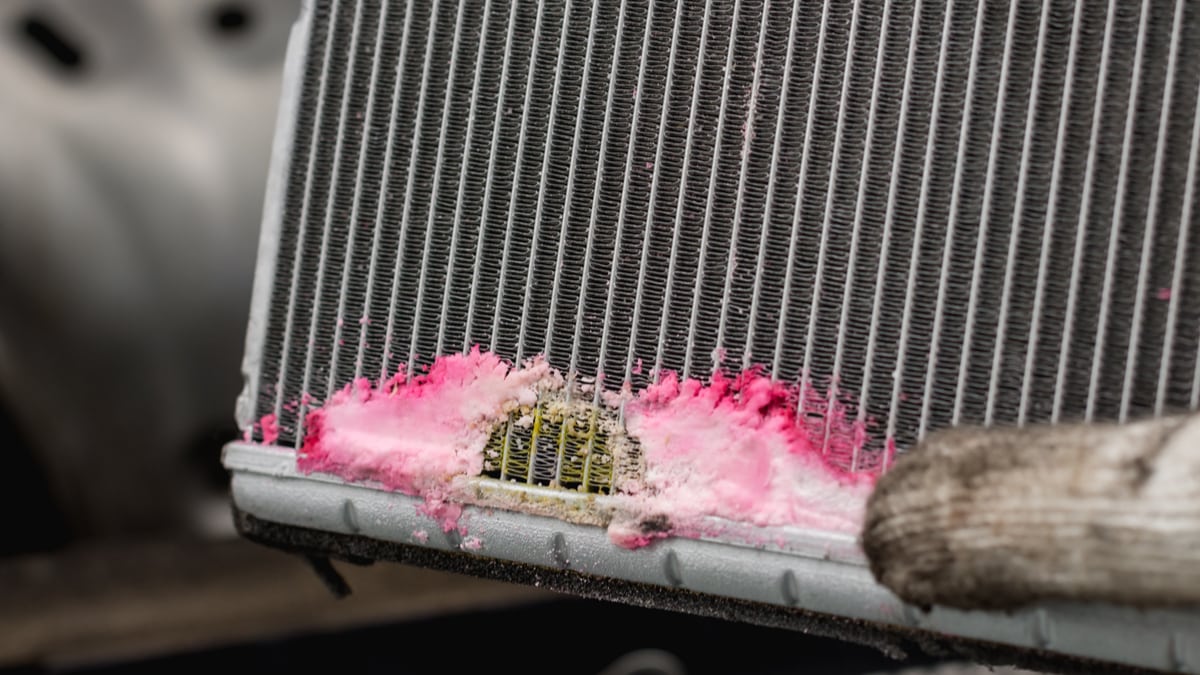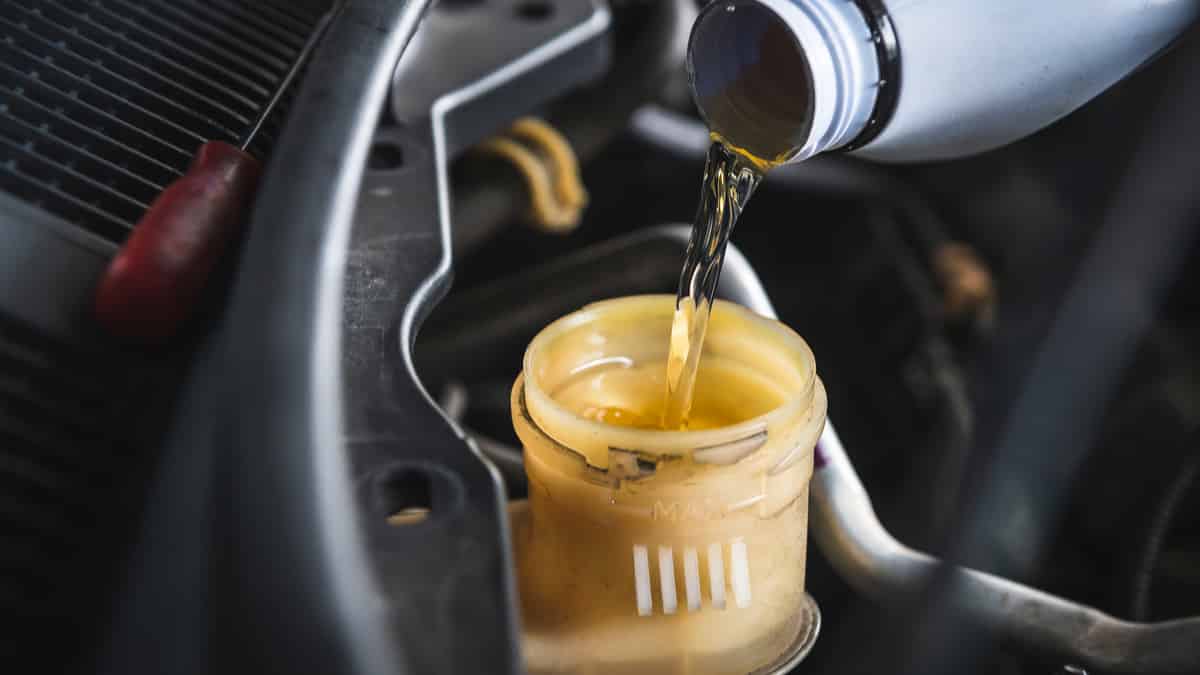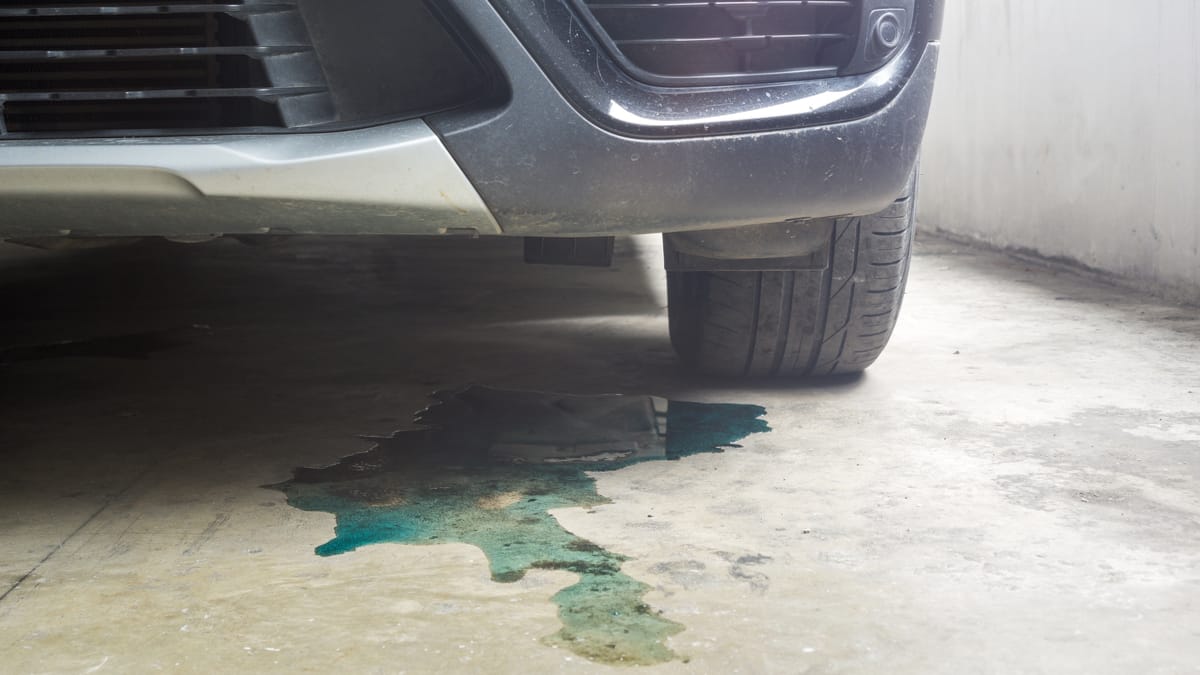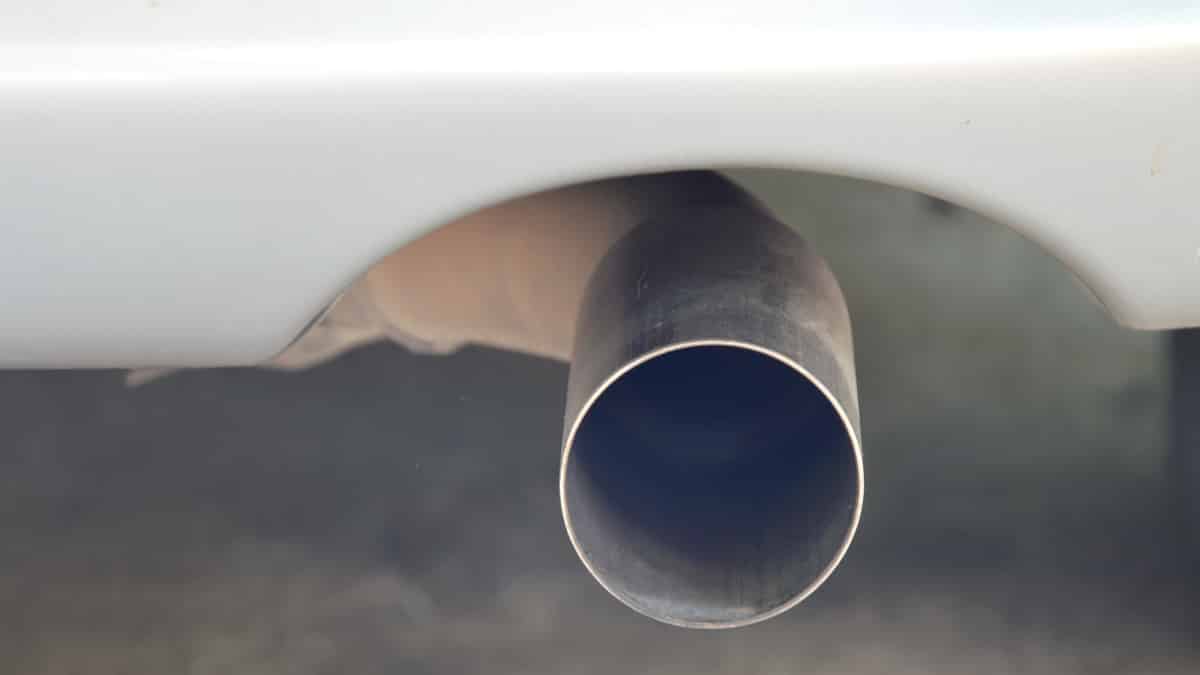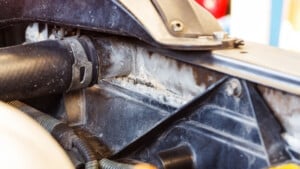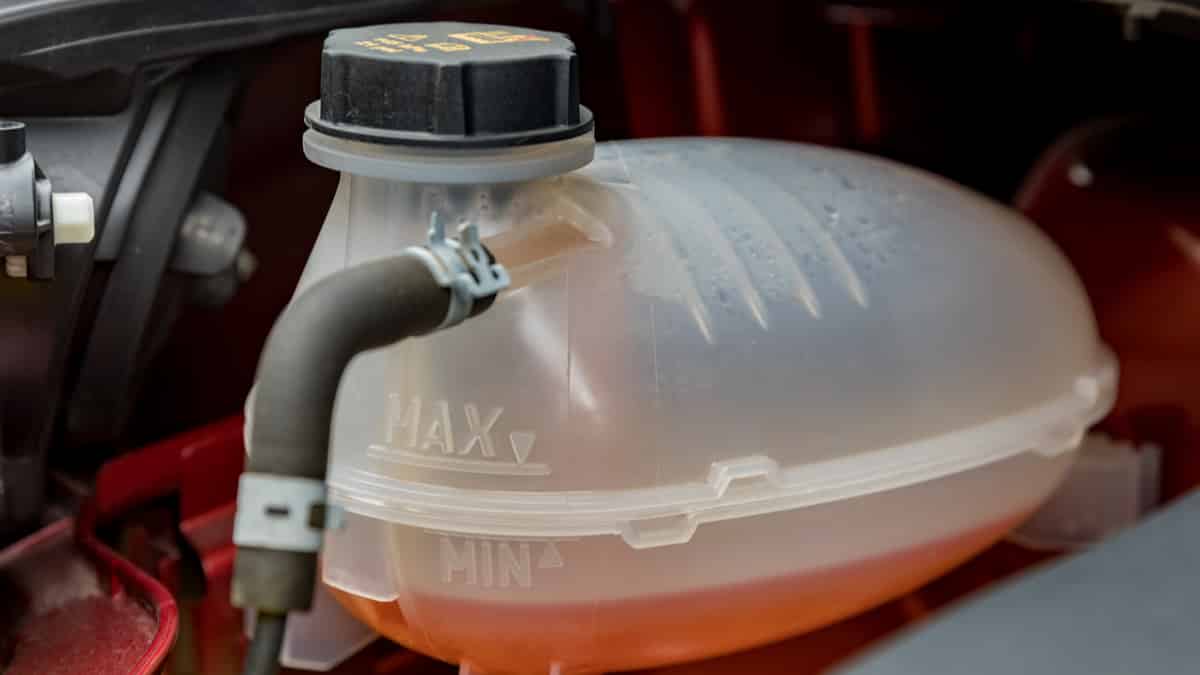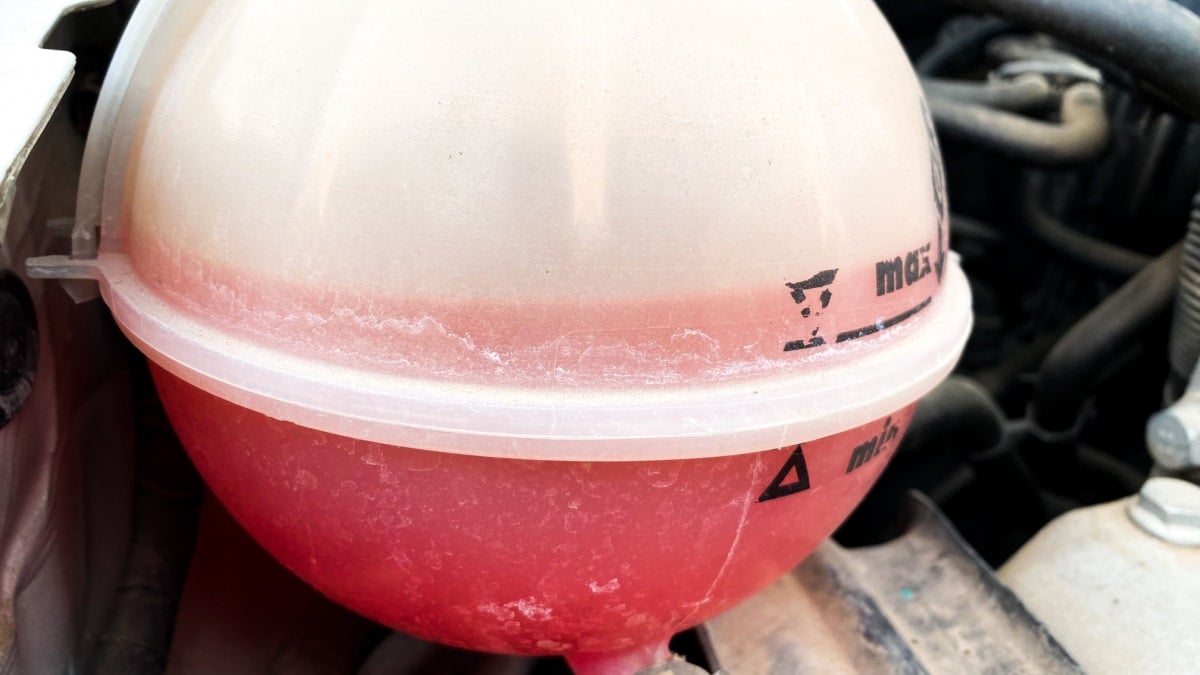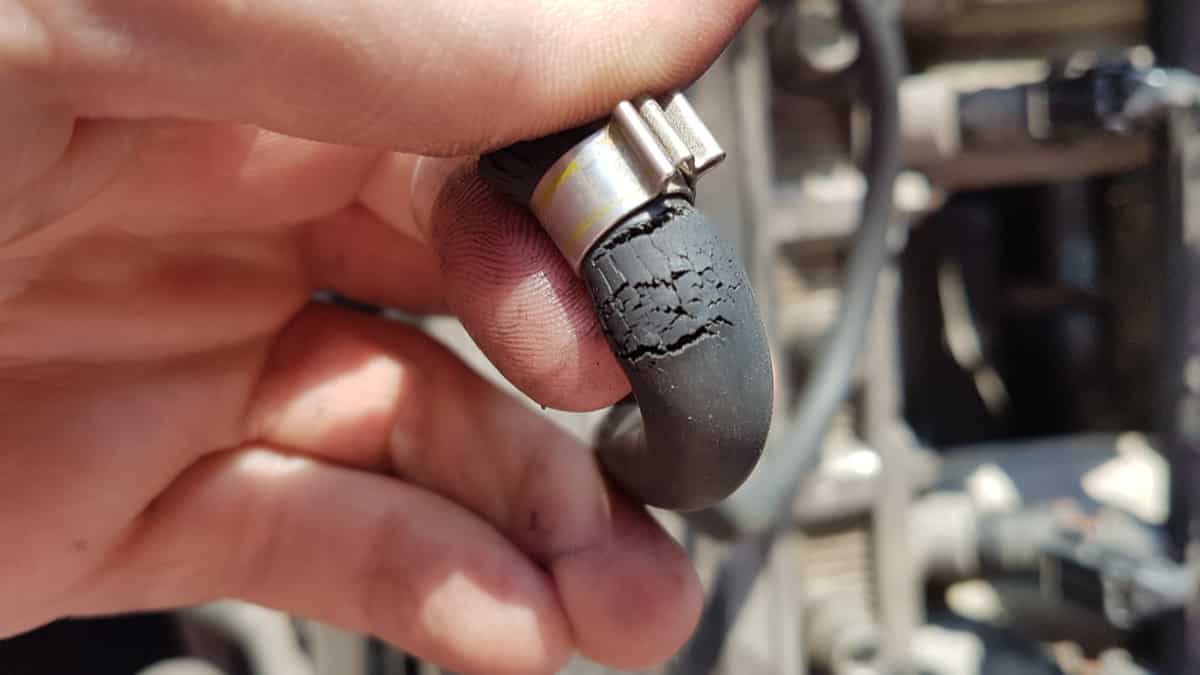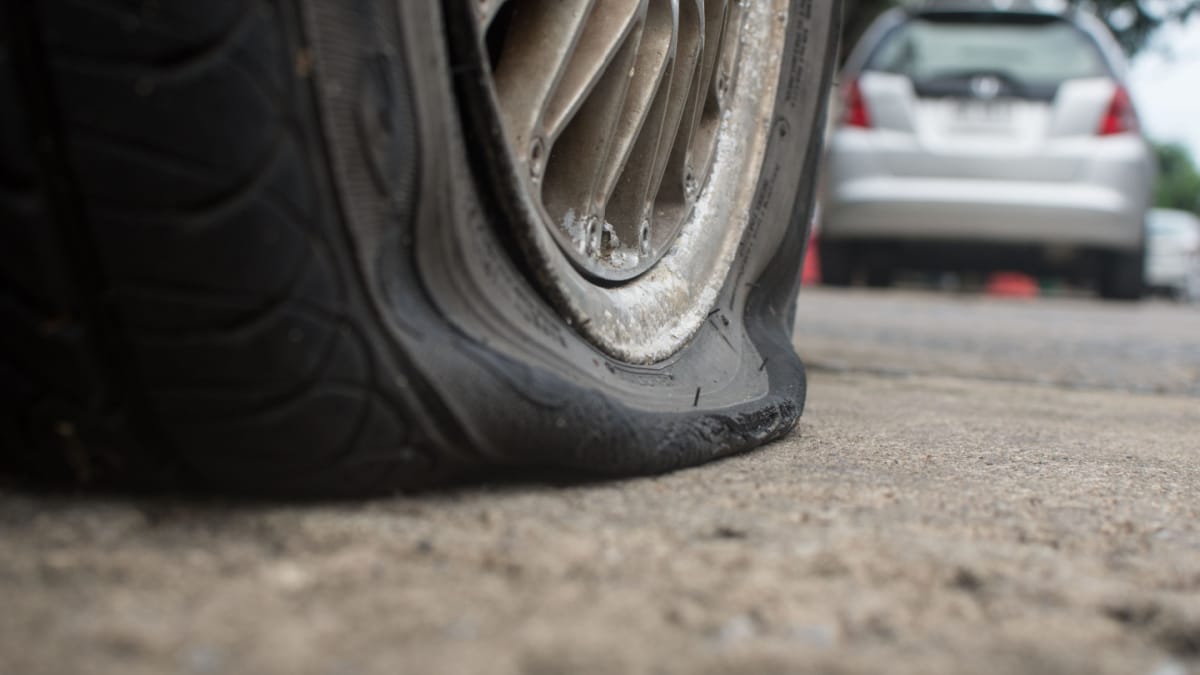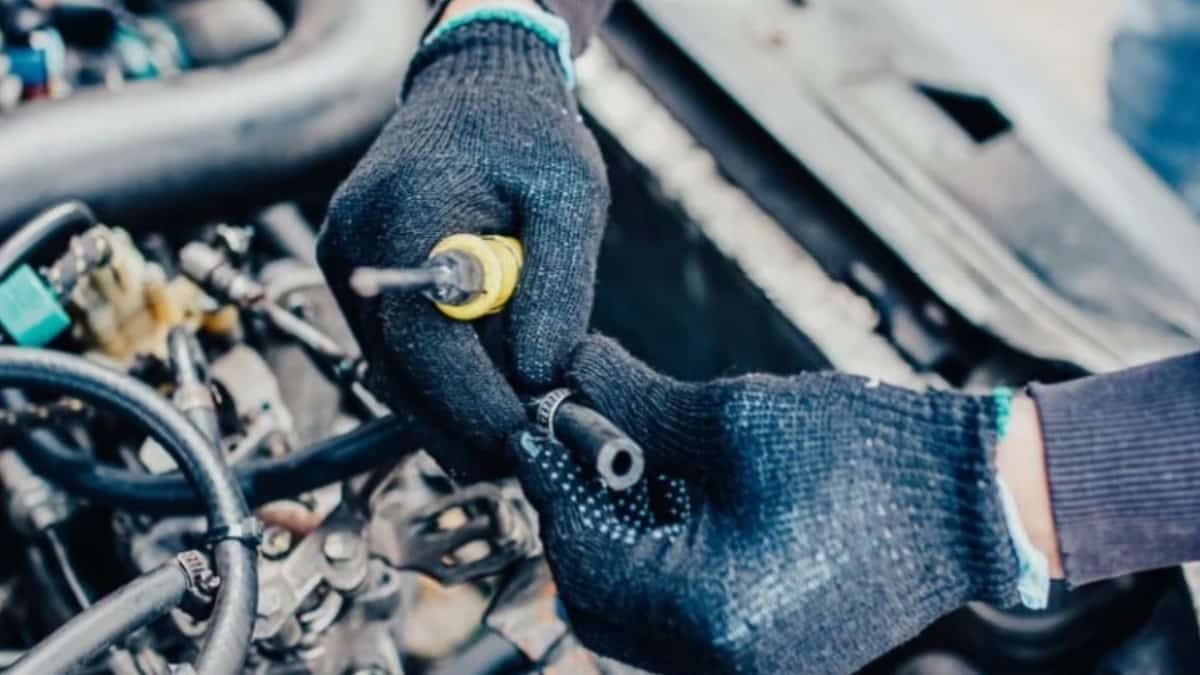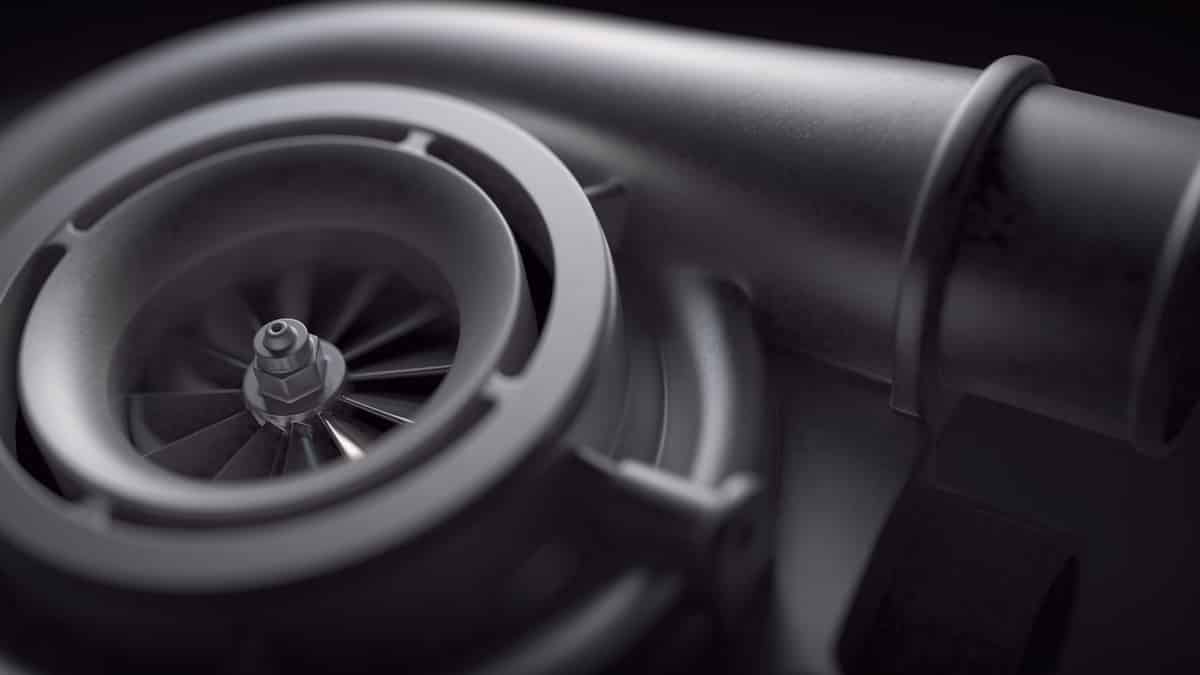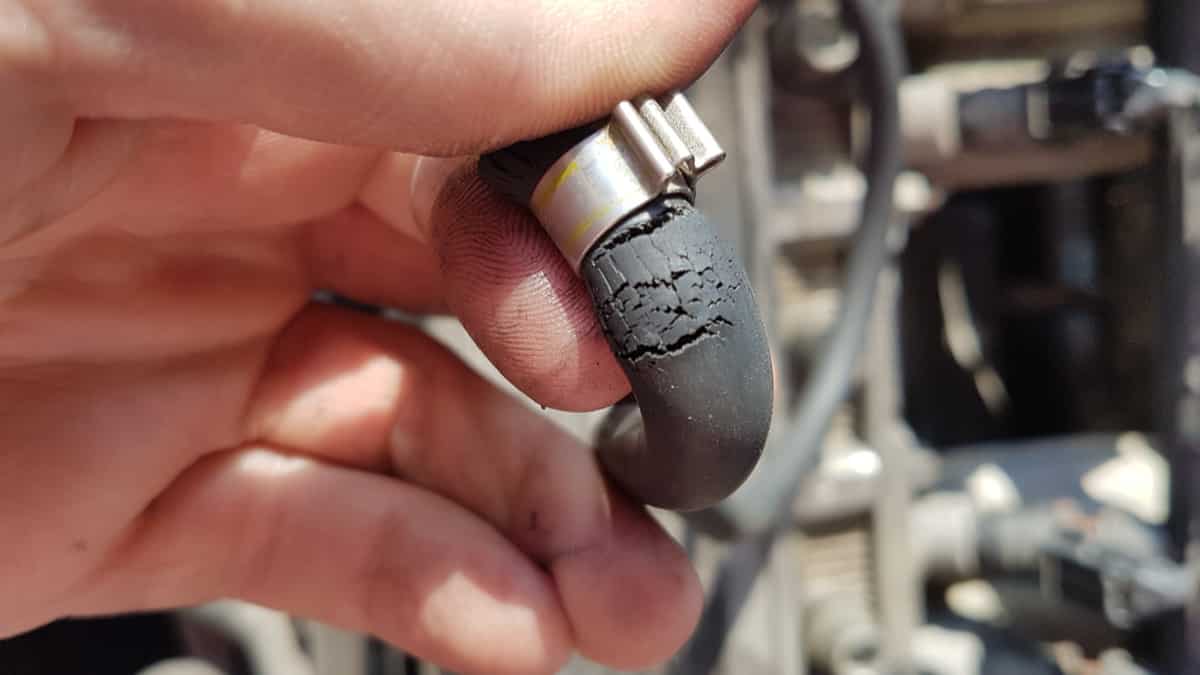A coolant leak has a distinct smell and color, making it unmistakable from other fluid leaks. If you notice antifreeze dripping from the vehicle or the reservoir seems to be emptying, it’s time to fix your car.
In this guide, we cover the top reasons for a coolant leak. We also show you how to find it and fix it so you don’t cause more damage to the car. When you are all done, you’ll know more about the price to fix a coolant leak and find a few helpful answers to your top questions.
Common Reasons For A Coolant Leak
Some of the most common reasons to see coolant under the car are a leaking radiator hose, a bad water pump or a loose radiator hose clamp. Leaks can also be caused by a bad thermostat housing, a worn intake manifold gasket, a bad heater core, a damaged radiator or cap, or a blown head gasket.
Some of these issues aren’t a big deal and can be easily repaired, while others indicate a serious problem. Let’s take a closer look.
1. Leaking Radiator Hose
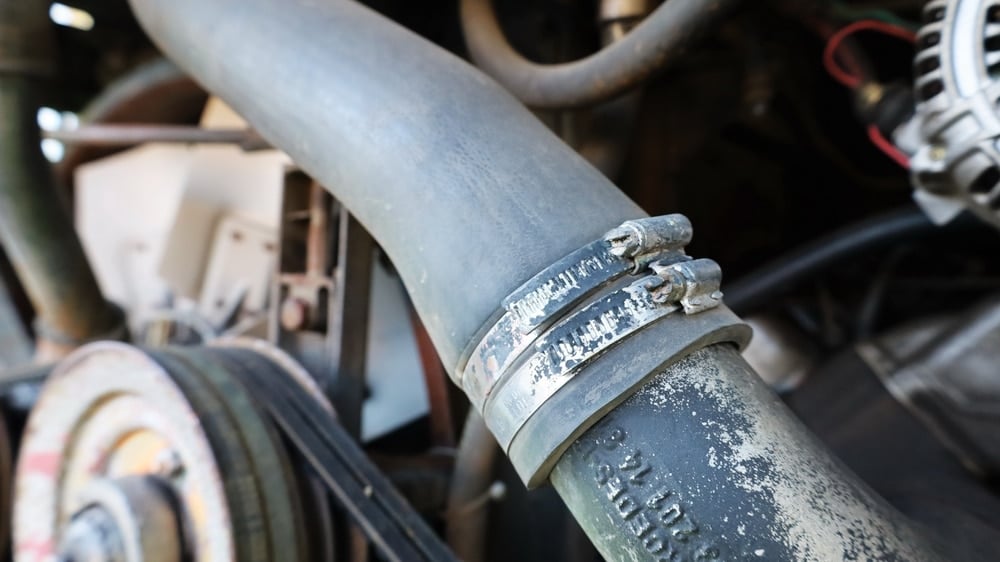
Radiator hoses are needed to transport coolant. They are molded into specific curves to fit the space under the hood. These hoses are made from ethylene propylene (EPDM) in most cases. While this material is resistant to heat, chemicals and hot water, they aren’t immune to damage. After many years of use, the rubber hoses are going to crack and break.
At first, you may see a hose seeping a small amount of fluid. If you don’t fix it right away, the hose can blow, leaving your engine without coolant and causing major problems.
RELATED: Coolant Leaking From Hose – Causes & Fixes
2. Loose Or Weak Radiator Hose Clamp
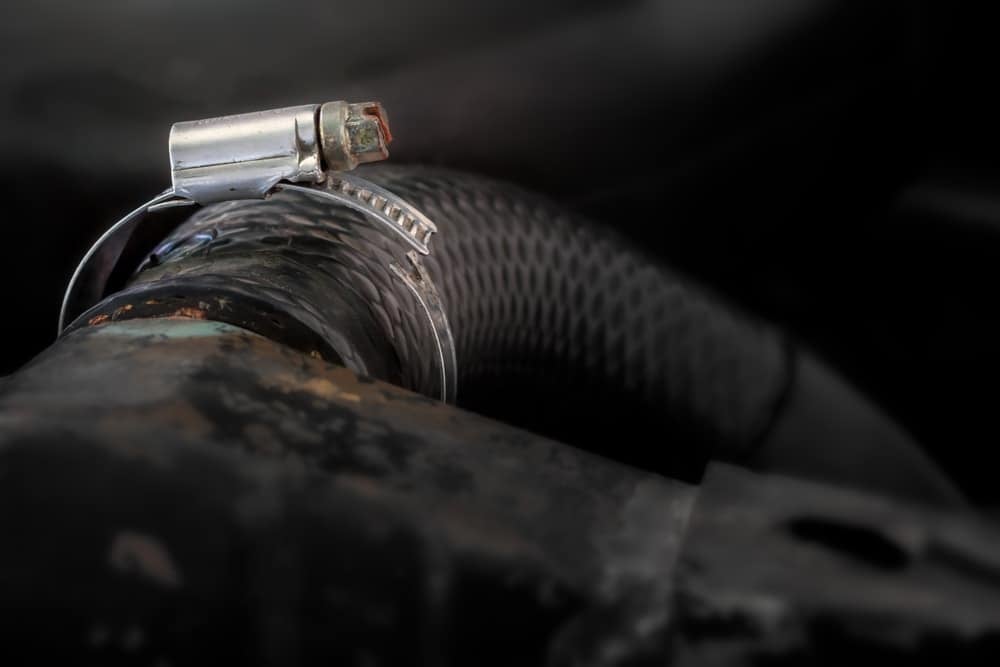
Clamps are responsible for holding the radiator hoses in place. These clamps can come in multiple forms, sometimes spring clamps are used, while other vehicles use wire clamps or screw and band clamps.
Either way, when the clamp wears out, the hose is going to leak. As with a leaking hose, you want to fix this problem sooner than later before the clamp gives out completely.
3. Leaking Water Pump
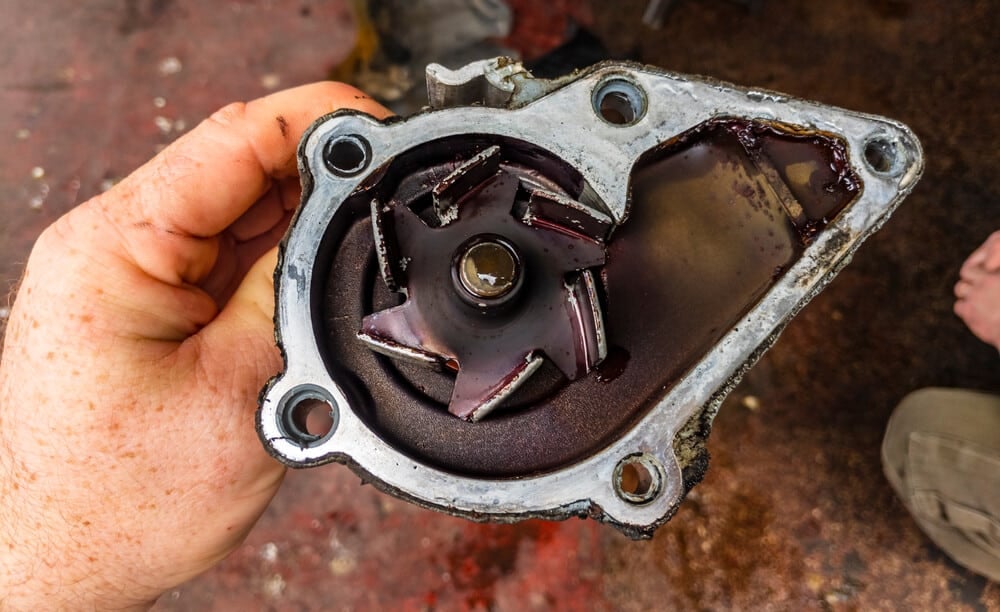
The car’s water pump is responsible for circulating coolant from the radiator to the engine block and back again. It’s driven by a belt. When the water pump gets old, it can fail. Along with a leak, you may notice some other symptoms.
For starters, without the right amount of coolant circulating through the system, the engine can overheat. Additionally, you may hear a lower groaning sound coming from the pump before it fails.
4. Leaking Thermostat Housing
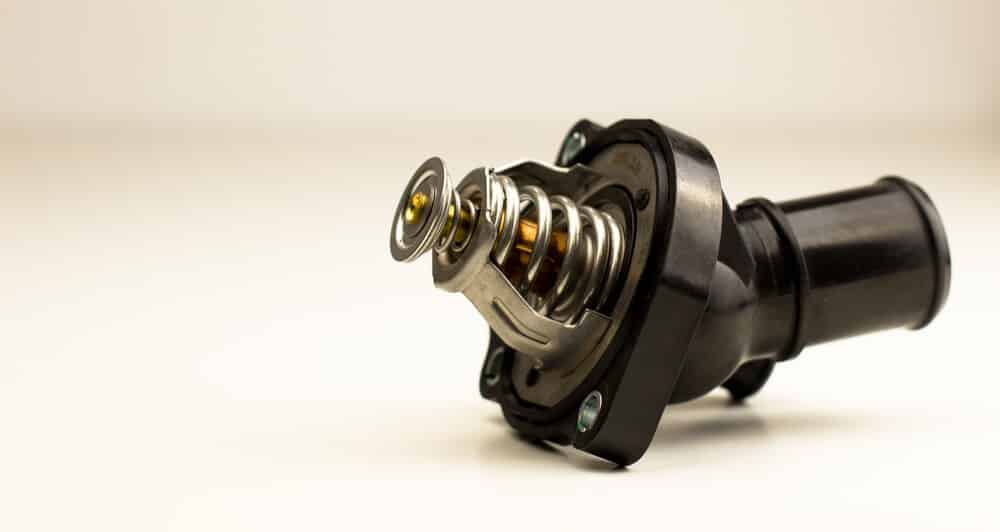
Coolant leaks commonly occur around the thermostat housing because the seal cracks. This typically only occurs because the seal is old and worn out.
When this happens, the engine starts to overheat. If you leave it unrepaired, you could cause serious engine damage.
4. Leaking Intake Manifold Gasket
The intake manifold is responsible for distributing the air to the cylinders. Some cars have a water-cooled manifold, so it’s prone to leaking, especially if the gasket fails.
With a leak, you will smell the coolant and possibly see some steam. There could also be pooling of the cooling under the vehicle, with more leaking as the gasket continues to deteriorate.
5. Bad Heater Core
The heater core heats the cabin with the warm coolant from the motor. Some of the coolant moves through the heater core in the dashboard. It only takes a leak that’s the size of a pinhole to start spraying coolant out of the vents into the cabin when the heat is running.
This typically signifies that the heater core is just starting to fail. You may also see some coolant on the floor under the dashboard.
6. Damaged Radiator or Radiator Cap
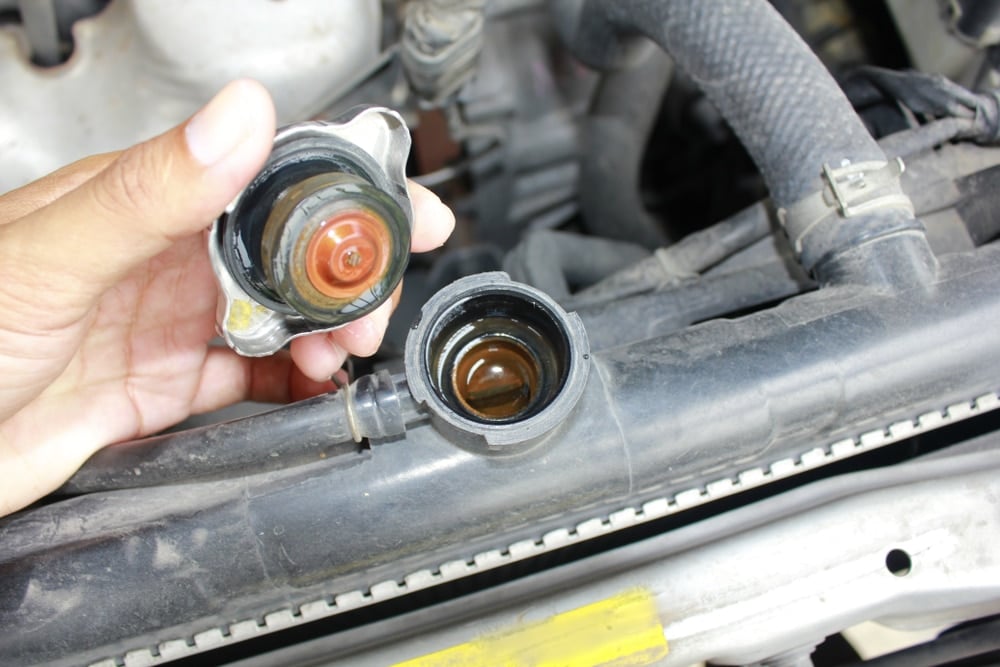
The radiator cap seems like it couldn’t cause trouble considering how small it is. Yet, this small part has a big job because it has to keep the pressurized fluid in the cooling system. If the seal of the cap gets dirty or deteriorates, fluid can leak out.
Additionally, your car radiator endures tons of the stress from extreme temperature and moisture. Eventually, it’s going to start corroding. If fluid is leaking from the radiator, there’s a good chance that there’s a hole causing the problem.
7. Blown Head Gasket
One of the worst scenarios to face is a blown head gasket. The head gasket is responsible for keeping the motor oil and coolant separated in the engine block. If the head gasket blows, you’ll start to see the temperature of the engine rising.
While you may not see a physical coolant leak, the reservoir may start to go down. Otherwise, you could see the oil and the coolant mixing because there’s an internal leak to deal with.
How To Find And Fix A Coolant Leak
The key to fixing the leak is to find it first. There are multiple ways we handle these problems as professionals, so here are a few tips.
1. Pressure Test The System
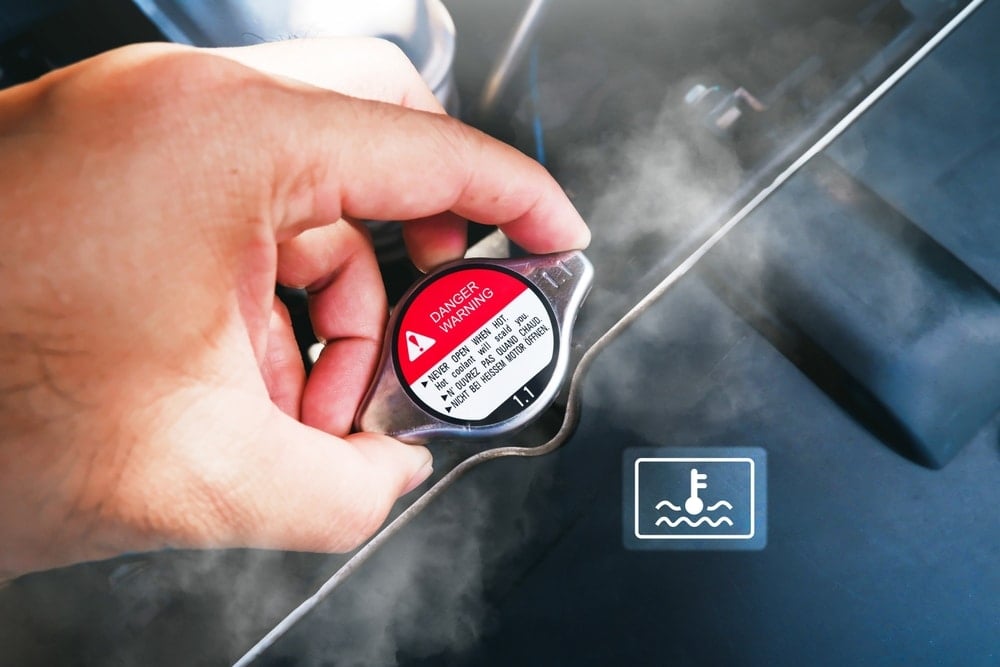
If there’s a leak, but you can’t figure out where it’s coming from, you want to run a pressure test. Here are the steps to follow.
- Install the radiator pressure tester at the neck of the reservoir.
- Pump until it hits the pressure listed on the radiator cap.
- Check the hoses, radiator and around the engine for leaks.
- You should also check the cabin for heater core leaks.
If the pressure drops but you don’t see a leak, assume that you may have a blown head gasket.
2. Fix The Leaking Part
Once you’ve determined what’s causing the leak, it’s time to repair it. If it’s a hose or a clamp, you may not have a lot of trouble doing this yourself.
However, more serious repairs, such as a radiator replacement or a blown head gasket may be beyond your level of expertise. Don’t be afraid to jump to step number five if you need more help.
3. Fill and Bleed the Cooling System
Once you have repaired the problem, you must refill the cooling system and bleed it. There should never be air inside the cooling system. Here are the steps to help you with this procedure.
- Remove the radiator cap with the engine off and cooled down.
- Insert your funnel into the radiator.
- Fill the radiator with coolant. Take your time, as the level may drop as some air bubbles pop on their own.
- Start the vehicle once the radiator is full.
- Turn the heater on to the hottest temperature with the fan on Low.
- Monitor the temperature coming out of the vents.
- As the coolant level drops, top it off with fresh fluid.
- Once there is heat coming from the vents, check the temperature gauge to ensure it’s in the normal operating range.
- Turn off the vehicle and replace your radiator cap.
You have successfully bled the cooling system. Now it’s time to see how the system works.
4. Test Drive and Inspect for Leaks

Take your car out for a spin and carefully watch the temperature gauge. You don’t want to go too far from home just in case the fix didn’t work.
When you arrive back, look underneath the car for any leaks. You can also leave a piece of cardboard under it overnight to see if anything drips.
5. Contact A Professional
If you are having trouble getting the leak fixed, it’s time to employ a mechanic. You don’t want to let the leak go unchecked or you could cause serious engine damage.
Research the local auto repair shops to make sure you go to a reliable garage. Also, ask for an estimate and compare it with some other quotes to ensure you aren’t paying too much.
Coolant Leak Repair Cost
The cost to repair a coolant leak varies greatly depending on what needs to be fixed. Let’s examine a few averages, figuring that you need the parts and labor.
- Replace coolant hose: $75 to $450
- Replace coolant hose clamp: $75 to $450
- Replace water pump: $300 to $800
- Replace thermostat housing gasket: $150 to $350
- Replace heater core: $300 to $1,250
- Replace radiator: $750 to $3,000
- Fix blown head gasket: $1,500 to $2,750
If you can do any of this work yourself, you would only need to buy the parts.
How serious is a coolant leak?
The engine needs the coolant to maintain a normal operating temperature. If the coolant leaks and can’t keep the temperatures down, the engine will overheat. When this occurs, serious engine damage is sure to follow. Therefore, coolant is vital to the normal operation of your car, so you shouldn’t avoid fixing a leak.
Is a coolant leak easy to fix?
It can be if you need to replace a radiator cap or a hose that’s in an accessible location. Otherwise, many of the other fixes can be more difficult, especially if you need to replace the radiator or fix a blown head gasket. You may be able to prevent more costly repairs by fixing the leak early on.
Can you drive a car with a coolant leak?
You shouldn’t continue driving with a coolant leak. Even if it looks small right now, it could turn into something major quickly. At any time, a hose could blow or a part could fail, allowing the fluid to dump out. If that happens, the engine will overheat and it could sustain serious damage.
What causes a sudden coolant leak?
A torn hose or hole in the radiator can cause the coolant to pour out quickly. It can also be caused by the failure of any of the cooling system parts. If there’s a leak that you can’t see, it could be infiltrating the engine block due to a blown head gasket.
Can you use a radiator stop leak additive?
Some people swear by radiator stop leak fixes and they may provide a small temporary solution. However, most automotive mechanics do not recommend the use of these additives as they can create more damage in the long run. Instead, it’s best to fix the leak the right way.
At the first sign of a coolant leak, you want to jump into action. Not only is coolant dangerous to pets and kids but letting a leak continue may lead to serious consequences. Troubleshoot the system to see if you can tell where the leak is coming from.
Once you spot it, take steps to repair it the best you can. If you aren’t comfortable working on the cooling system, take your vehicle to a mechanic for a professional repair. A coolant leak doesn’t need to ruin your car engine, but it will if you neglect to have it fixed.
Categories: Coolant, Troubleshooting
